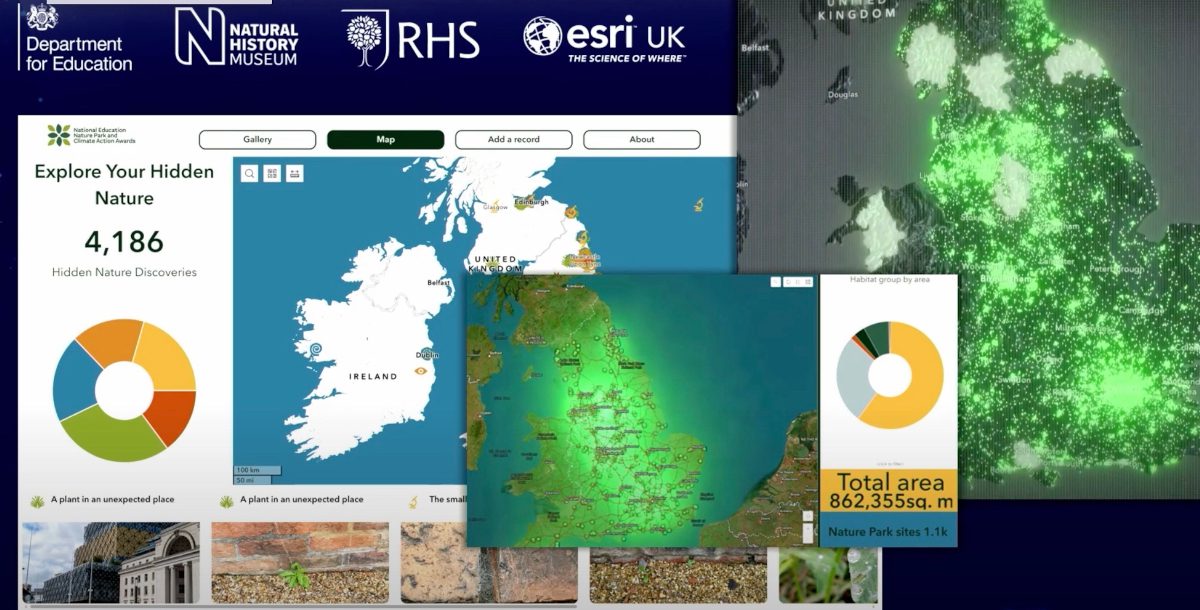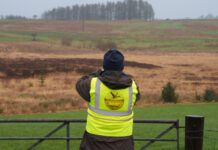
The first annual report from the National Education Nature Park has been published, showing that more than 1 in 8 schools and colleges across England have joined the free programme in its first year, which is creating a network of green spaces across the education estate.
Children and young people at more than 3,000 schools, nurseries and colleges across England are leading the way in turning their learning sites from grey to green by exploring, mapping and creating habitats in their school grounds through activities including building green walls, digging ponds and growing pollinator-friendly plants.
The programme, free for all schools, nurseries and colleges in England, is designed to enhance children and young people’s wellbeing and develop their green skills, all while contributing to nature recovery.
It’s been designed and delivered by a partnership led by the Natural History Museum working with the Royal Horticultural Society (RHS) alongside other partners, including geospatial expertise from Esri UK to place technology-enabled nature discovery at the heart of the programme. It has been commissioned and funded by the Department for Education as part of its Sustainability and Climate Change Strategy.
The partnership with Esri UK to develop the digital mapping infrastructure for the project, enables young people to access professional-quality geospatial mapping tools specifically tailored for education settings.
By imagining all education settings as an interconnected green space on a national map, the impact on nature recovery across the country is being collectively tracked and assessed. As children and young people transform their sites for both people and wildlife, they use digital tools to collect data that contributes to trailblazing scientific research into nature recovery, led by scientists at the Natural History Museum.
Minister for Early Education, Department for Education, Stephen Morgan said: “All young people should be able to harness the benefits of spending time in nature, and the National Education Nature Park is making huge strides in breaking down the barriers so many face in accessing, understanding and interacting with the natural world.
“Through this programme we aim to help improve wellbeing of young people, boost biodiversity of the entire education estate and help those involved develop skills for the future.”
Lucy Robinson, Community Science Manager and Deputy Head of the Centre for UK Nature at the Museum, said: “School grounds cover a huge area of land but are one of the most under-recorded urban habitats in the country. Young people taking part in the Nature Park have already mapped over 2 million m2 of habitats, which is equivalent to about 1,600 Olympic-size swimming pools! As they continue to enhance the habitats on their sites, we’ll begin to see the impact young people are having on nature recovery across the country”.
All resources and tools from the programme are completely free, with a focus on low-cost options for improving nature and providing guidance on finding funding. Schools in areas that are the most disadvantaged and nature depleted are also eligible for Department for Education funding to help them improve their outside learning facilities. More than 500 schools and nurseries that fulfil government eligibility criteria have been awarded a share of £5 million to green previously grey areas of their school grounds. Examples include:
- Co-op Academy in Manchester have installed a green wall to help cool down a courtyard space and the internal south facing classrooms. Thermal imagery captured by the school has revealed the wall complete with ivy, lavender and mint has reduced the surface temperature by 10°C.
- Milton Hall Primary School and Nursery in Southend turned a grey corner of their playground into a wildlife haven, complete with wildflower containers, trellises and hanging pots. For many of the pupils, their school site is their only access point to nature with the grant helping to get more pupils engaged with growing.
Sam Hartley, Programme Lead at the RHS, said: “We know that getting your hands dirty in nature is one of the best ways to understand and appreciate it. Through the mapping of existing habitats and creation of new green oases within schools, pupils and the local environment will better understand how to protect the environment and take care of it for both their own and nature’s future with funding available to support the transition.”
Any school, college or nursery in England can register to join the National Education Nature Park at www.educationnaturepark.org.uk. Those looking to get started are invited to celebrate Hidden Nature Week (14-20 October) by taking part in the programme’s Hidden Nature Challenge activity.
Read the annual report here: https://www.educationnaturepark.org.uk/annual-report






